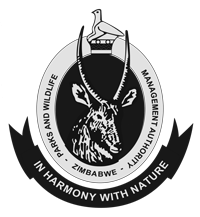Chimanimani National Park boasts an astonishing area of 656 km2. Situated in the captivating Chimanimani Mountains, this protected area in the Manica Province of Mozambique is a nature lover’s paradise.
With its awe-inspiring landscapes, diverse flora and fauna, and cultural significance, this hidden gem offers an unforgettable experience for visitors seeking to explore the wonders of Southern Africa.
Key Takeaways:
- Chimanimani National Park covers an expansive area of 656 km2.
- The park is located in the scenic Chimanimani Mountains on the border of Zimbabwe and Mozambique.
- It is renowned for its pristine environment, diverse flora and fauna, and cultural significance.
- Monte Binga, the highest peak in Mozambique, can be found within the park.
- Chimanimani National Park offers a range of outdoor activities, including hiking and camping.
Geography of Chimanimani National Park
Chimanimani National Park encompasses the Mozambican portion of the picturesque Chimanimani Mountains, a stunning mountain range spanning approximately 50 kilometres. The park’s crown jewel is Mount Binga, standing proudly as the highest peak in Mozambique at an impressive elevation of 2436 meters.
Spanning over 656 km², Chimanimani National Park protects this majestic mountain range and includes a substantial buffer zone of 1723 km² that extends into lower-elevation areas. This buffer zone is crucial in preserving the park’s ecological significance and is home to several forest reserves established in 1953.
“The buffer zone of Chimanimani National Park is a testament to our commitment to conservation. It ensures the protection of valuable forest reserves, such as Moribane, Mpunga, Maronga, and Zomba, which contribute significantly to the park’s biodiversity and natural beauty.” – Park Ranger
The forest reserves within the buffer zone are vital havens for a diverse range of plant and animal species. Nestled within the lush greenery, these reserves sustain a delicate balance of fragile ecosystems, providing essential habitats for flora and fauna to thrive in this mountainous landscape.
Such pristine natural surroundings can be found throughout Chimanimani National Park, offering visitors a remarkable experience in nature’s heart.
Flora and Fauna of Chimanimani National Park
Chimanimani National Park is home to a diverse range of plant and animal species, contributing to its reputation as a biodiversity hotspot. The park boasts an impressive flora, with over 30% of Zimbabwe’s total plant species thriving within its boundaries. This makes it a haven for nature enthusiasts and botany enthusiasts alike.
Besides its remarkable plant diversity, Chimanimani National Park provides a vital habitat for several rare and unique animal species. Among them are the Red-capped robin-chat and the elusive Welwitsch’s bat. These species are not commonly found in other regions, making their presence in the park particularly noteworthy.
The park is also home to various wildlife, although it may not offer the same abundance as other reserves. Visitors can encounter majestic animals such as eland, bushbuck, and the diminutive blue duiker. While their numbers may be relatively small, witnessing these creatures in their natural habitat is a rewarding experience.
Chimanimani National Park’s commitment to conservation and protection ensures that these flora and fauna flourish undisturbed. It serves as a sanctuary for these species, playing a crucial role in preserving their populations and contributing to the overall biodiversity of the area.
Conclusion
Chimanimani National Park is a haven for outdoor enthusiasts and nature lovers. The park offers numerous hiking trails that cater to all skill levels, allowing visitors to immerse themselves in the pristine environment. These trails lead to breathtaking waterfalls, scenic viewpoints, and unique rock formations, providing an unforgettable experience.
Camping is a popular activity in Chimanimani National Park, offering visitors the chance to spend the night surrounded by the serene beauty of nature. Whether you prefer camping in designated areas, exploring the caves, or staying in the mountain hut, the park provides a range of options to suit different preferences.
However, Chimanimani National Park is not just a natural wonderland. It also holds great cultural significance, as locals have preserved cave paintings, ancient traditions, and beliefs for generations. Exploring the park allows visitors to connect with the rich cultural identity of the region, adding an extra layer of depth and meaning to their experience.
Whether you are seeking adventure, looking to explore the pristine environment, or eager to immerse yourself in the local culture, Chimanimani National Park has something to offer for everyone. Discover the beauty of this hidden gem and create memories that will last a lifetime.

